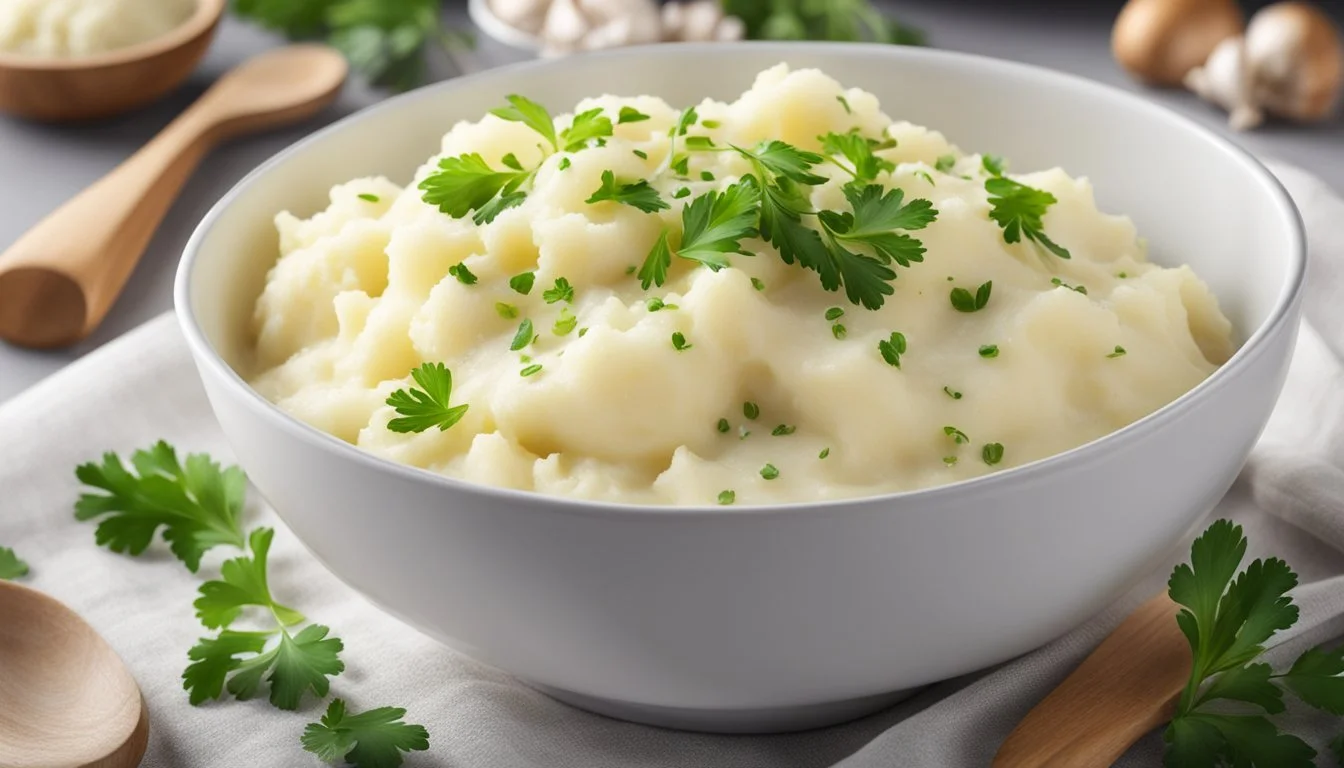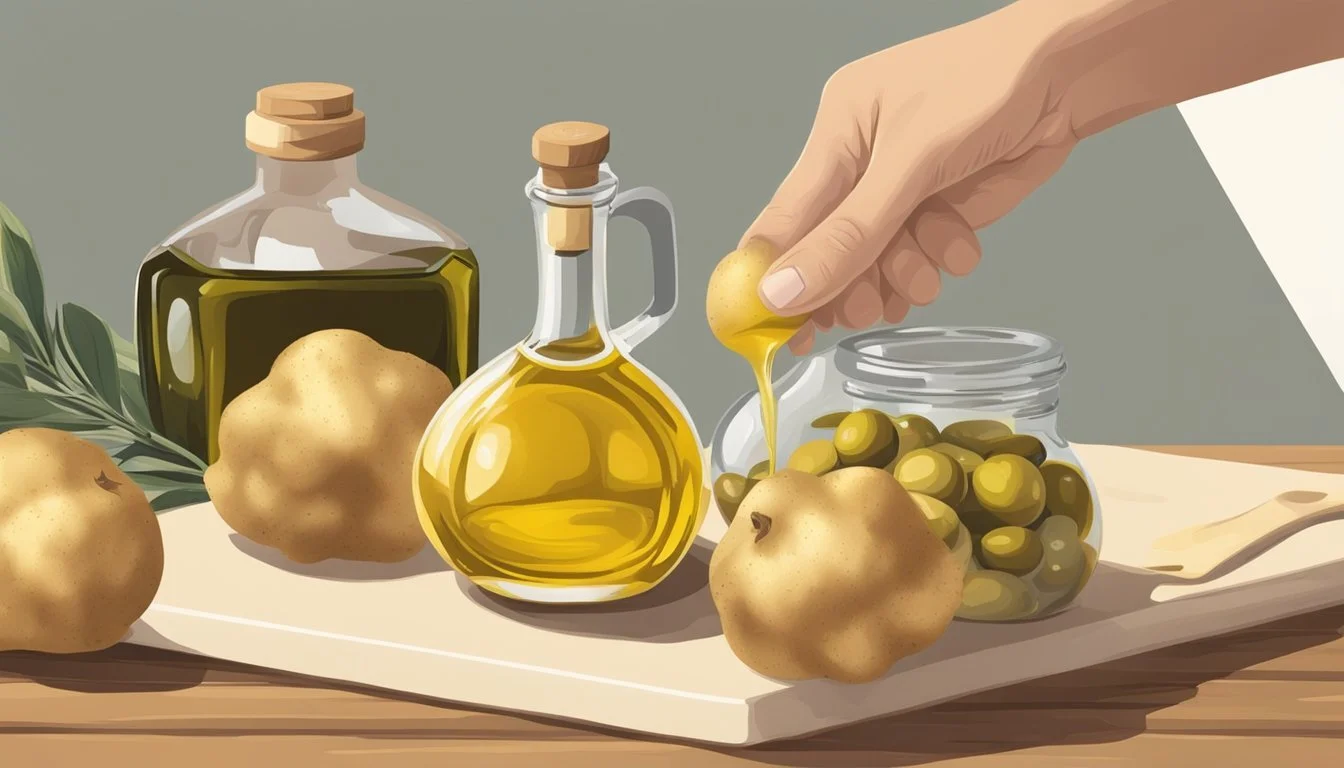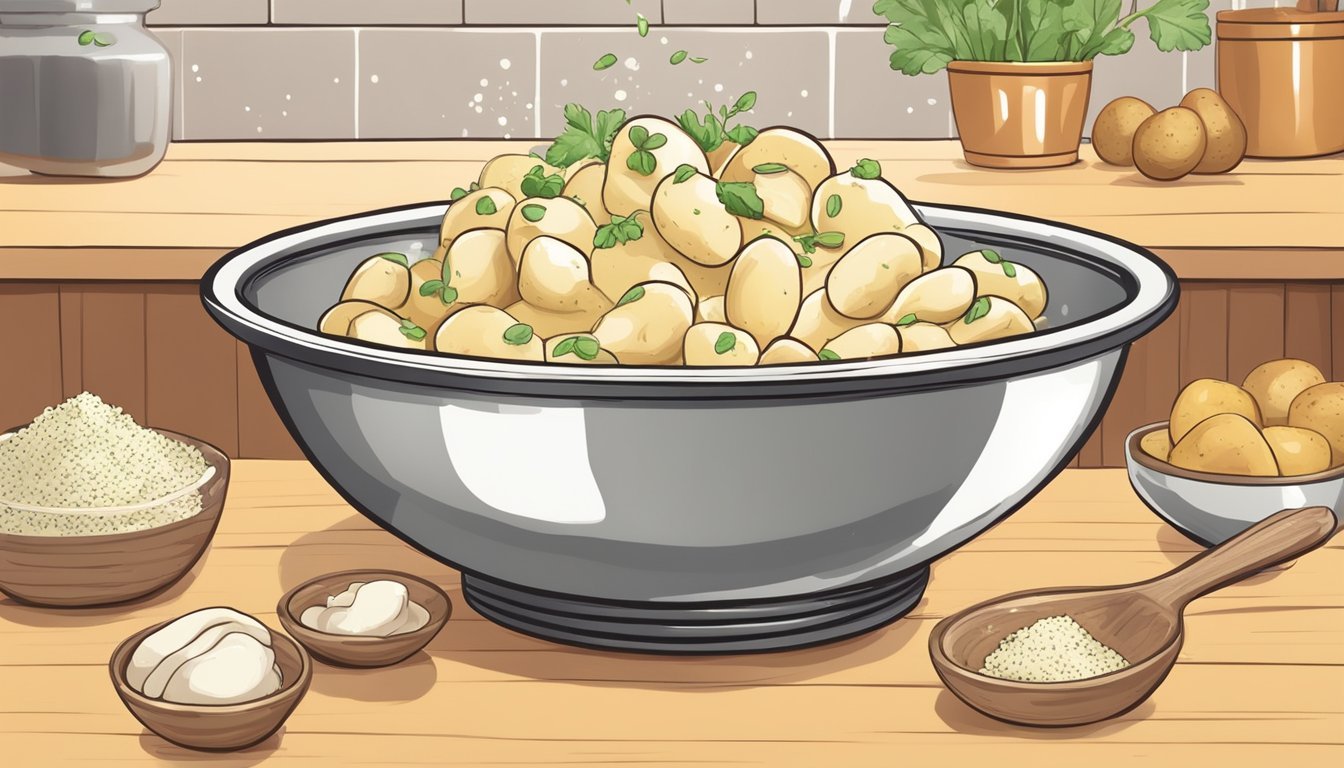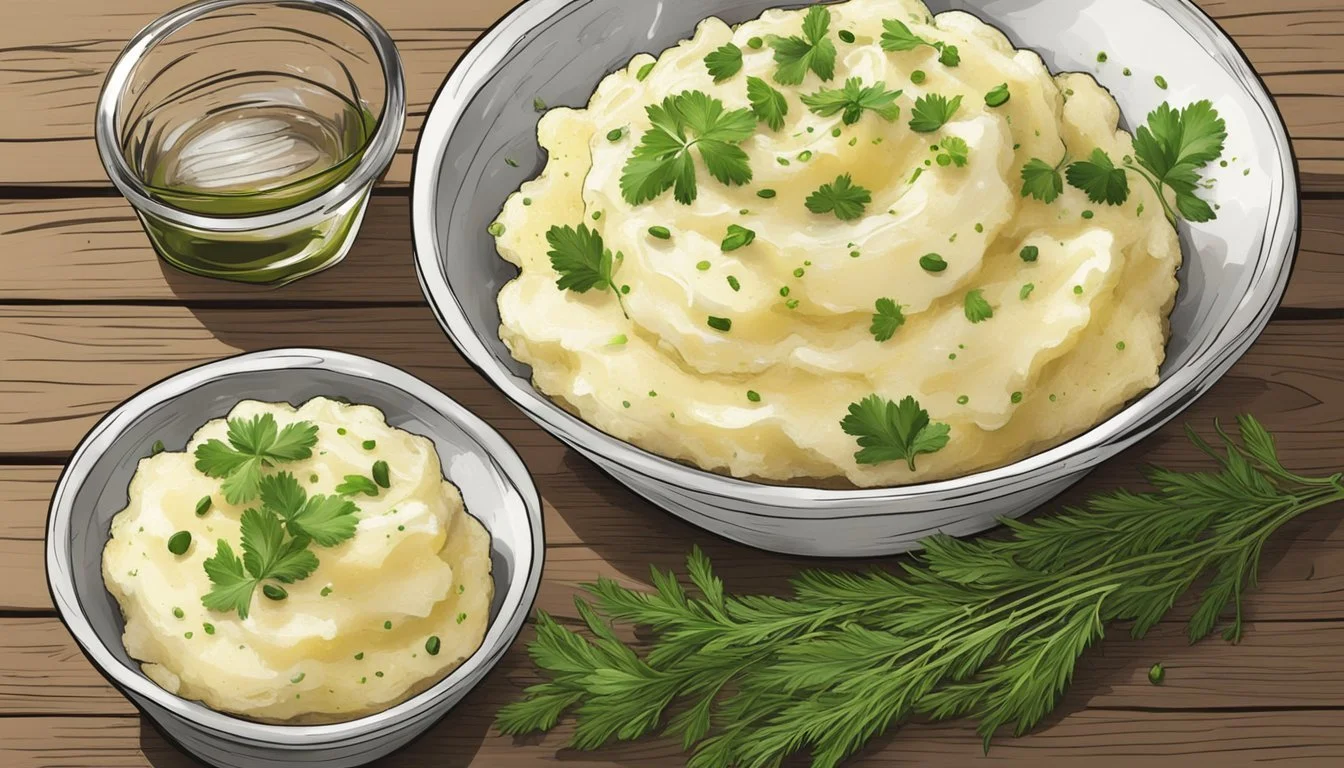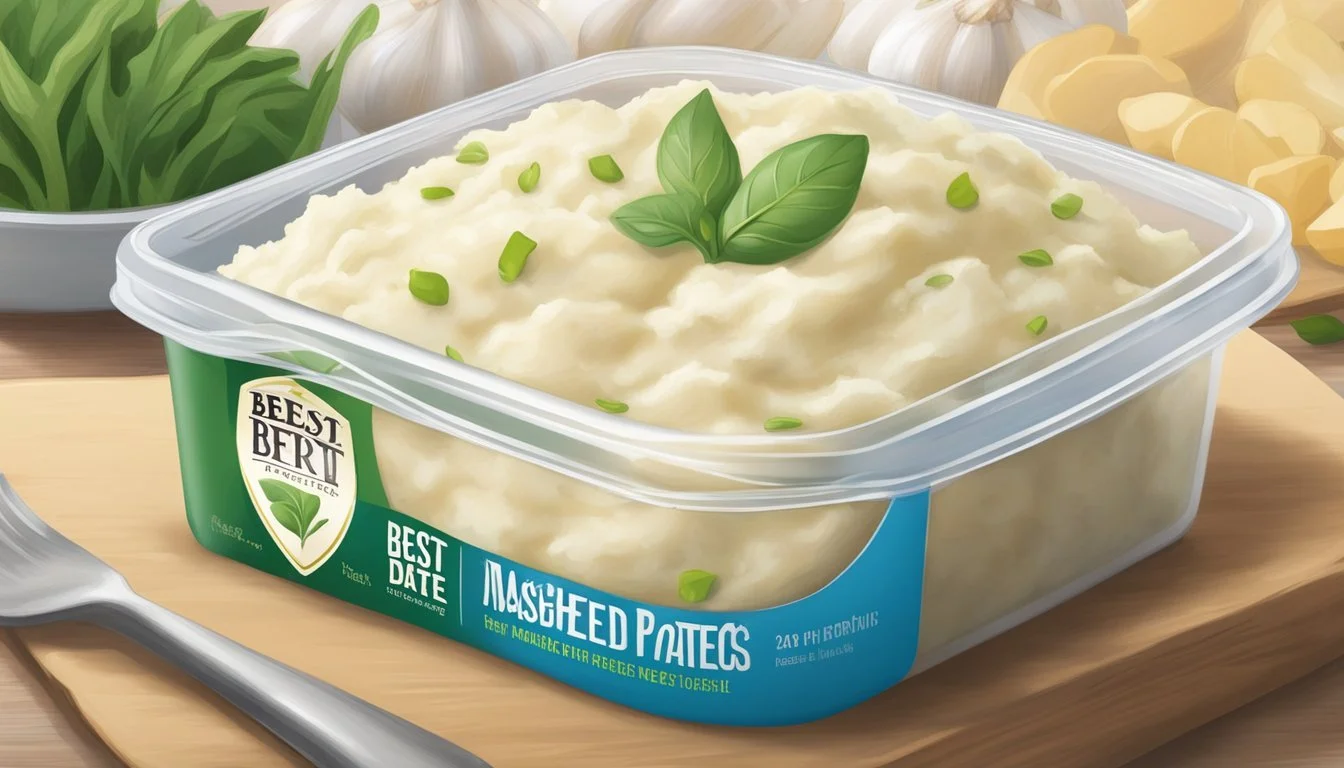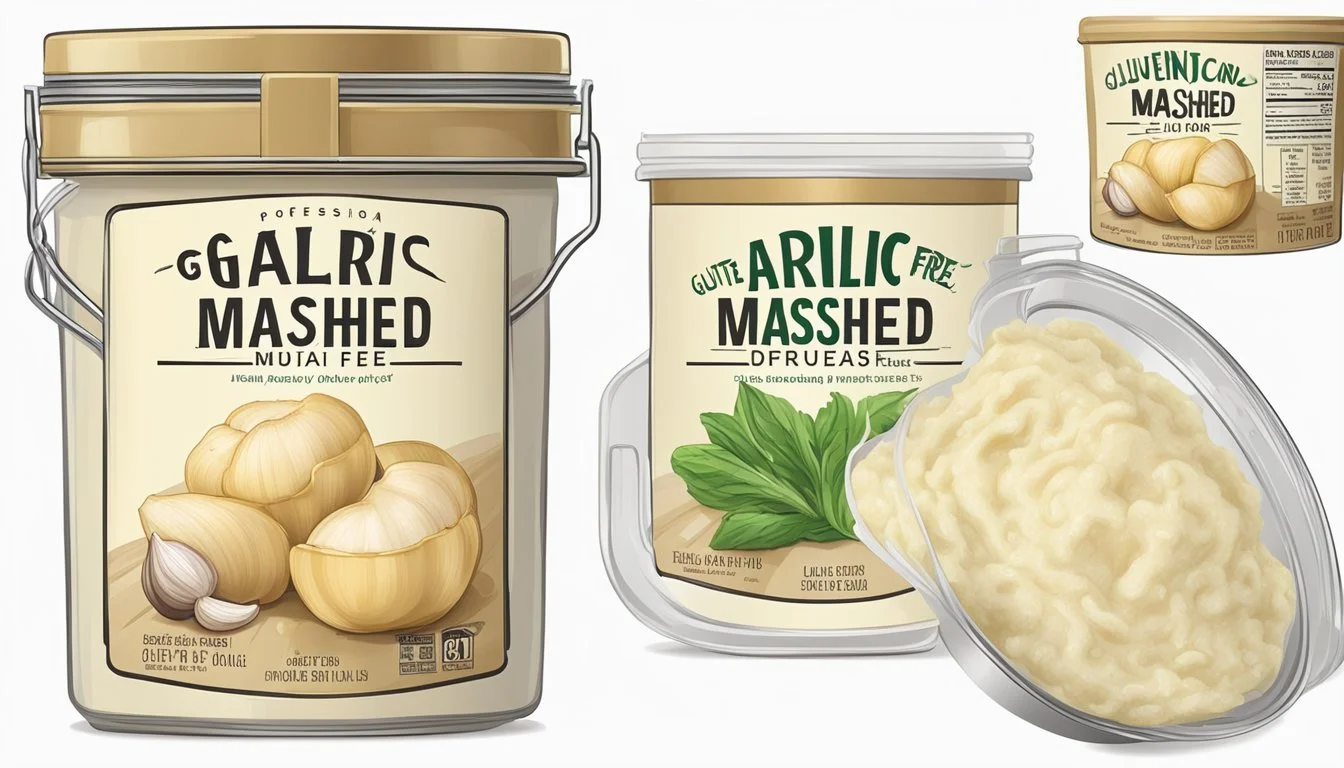How Long Do Gluten-Free Garlic Mashed Potatoes Last?
Shelf Life and Storage Tips
Storing gluten-free garlic mashed potatoes properly is key to maximizing their freshness and flavor. Properly stored in an airtight container in the refrigerator, gluten-free garlic mashed potatoes can last for about 3 to 5 days. For longer preservation, consider freezing them, where they can maintain quality for up to two months.
Understanding the timeline for storage helps not just in maintaining their taste but also in meal planning and reducing waste. Having a clear idea of how long these delicious mashed potatoes remain good to eat ensures you enjoy them at their best quality without any health risks.
For anyone looking to prep meals ahead or manage leftovers efficiently, knowing the shelf life of gluten-free garlic mashed potatoes is essential. Keeping this information in mind can save time and effort, allowing you to enjoy this simple yet delightful dish for days after it’s made.
Understanding Gluten-Free Garlic Mashed Potatoes
Gluten-free garlic mashed potatoes offer a delicious and safe alternative for those with gluten sensitivities. These potatoes maintain the same creamy texture and rich flavor without gluten.
Defining Gluten-Free
A gluten-free diet excludes gluten, a protein found in wheat, barley, and rye. For individuals with celiac disease or gluten intolerance, consuming gluten triggers adverse reactions. Garlic mashed potatoes can be made gluten-free by using potatoes, which naturally do not contain gluten.
Ensuring all ingredients used are gluten-free is crucial. Ingredients such as butter, milk, and seasonings must be checked for any hidden sources of gluten. Using certified gluten-free products helps maintain the safety and authenticity of the dish.
The Health Benefits of Gluten-Free Side Dishes
Gluten-free garlic mashed potatoes provide a nutritious side dish option. They offer essential nutrients like vitamins, minerals, and fiber. Potatoes are rich in vitamin C and potassium, promoting overall health.
By avoiding gluten, those with celiac disease can prevent gastrointestinal issues and other health complications. Furthermore, gluten-free dishes can encourage more mindful eating. Substituting with high-quality, natural ingredients often leads to better dietary habits and improved digestion for those sensitive to gluten.
Selecting the Right Ingredients
Choosing the correct ingredients for gluten-free garlic mashed potatoes ensures delicious flavor and texture. Key considerations include selecting the best type of potatoes and using high-quality garlic.
Choosing the Best Potatoes
When making gluten-free garlic mashed potatoes, Yukon Gold, russet, and red potatoes are the best options due to their texture and flavor profiles. Yukon Gold potatoes are creamy and have a buttery taste, making them ideal for smooth mashed potatoes. Russet potatoes are starchy and break down easily when boiled, resulting in a fluffy, light texture. Red potatoes, while less starchy, provide a hearty and dense consistency.
A mix of Yukon Gold and russet potatoes can create a balanced blend of creaminess and fluffiness. Ensure the potatoes are fresh and free of blemishes or sprouts for optimal results. This combination enhances both the flavor and appearance of the dish.
Importance of Quality Garlic
Using fresh, high-quality garlic is essential for achieving a rich, aromatic flavor in your mashed potatoes. Large, firm cloves indicate freshness. Avoid garlic heads that are soft, discolored, or sprouting. Fresh garlic provides a robust taste that permeates the dish evenly.
Opt for locally sourced or organic garlic, if possible, to ensure the best flavor. Garlic powder can be used in a pinch, but it lacks the depth of flavor fresh garlic offers. When adding garlic, mince or press the cloves to release the essential oils and distribute the flavor uniformly.
Adding garlic while the potatoes are hot ensures even infusion. For enhanced flavor, consider lightly sautéing the garlic in unsalted butter before mixing it into the mashed potatoes. This process mellows the garlic's raw edge and adds a subtle sweetness to the dish.
Preparation Techniques
To ensure gluten-free garlic mashed potatoes turn out perfectly, it is important to use proper peeling and cubing methods, as well as boiling the potatoes to the right texture. These steps will help you achieve the ideal consistency and taste.
Proper Peeling and Cubing Methods
Start by selecting fresh potatoes. Wash them thoroughly to remove any dirt. Using a vegetable peeler, peel off the skin, keeping the strips thin to avoid wasting too much potato.
Once peeled, place the potatoes on a clean cutting board. Cut each potato into evenly-sized cubes, roughly 1 inch in size. This ensures even cooking.
Smaller, even cubes help in achieving a uniform texture and prevent some pieces from being undercooked while others are overcooked. This step is essential for achieving smooth and creamy mashed potatoes.
Boiling to the Right Texture
Place the cubed potatoes in a large pot. Add cold water until the waterline sits about 1 inch above the potatoes. Adding a tablespoon of salt to the water enhances flavor as the potatoes cook.
Bring the water to a boil over high heat. Once boiling, reduce the heat to medium-high and cook for about 10-15 minutes. The aim is to cook the potatoes until they are fork-tender, meaning a fork can easily pierce through with little resistance.
Carefully drain the potatoes using a colander. Return them to the pot for mashing, adding ingredients like butter, garlic, and milk immediately for best results. This ensures a smooth, flavorful mash.
The Mashing Process
Achieving the perfect consistency for gluten-free garlic mashed potatoes involves using the right tools and techniques. Incorporating butter and milk at the ideal time ensures a smooth and creamy texture.
Achieving the Perfect Consistency
To achieve the desired texture, potatoes must be boiled until they are tender and easily pierced with a fork. This typically takes about 15-20 minutes. Once boiled, the potatoes should be drained and returned to the pot immediately.
Using a potato masher, mash the potatoes thoroughly. It's important to avoid over-mixing, which can release excess starch and make the potatoes gluey. The goal is to create a smooth, lump-free consistency.
Some cooks prefer to use a ricer or food mill for an ultra-smooth texture, but a potato masher is usually sufficient. Keeping the potatoes warm throughout this process helps achieve the right consistency.
Incorporating Butter and Milk
Adding butter and milk (or heavy cream) at the right moment is crucial for flavor and texture. Start by adding butter directly to the hot, drained potatoes. Allow it to melt slightly before mashing. This step enhances the flavor and smoothness.
Next, incorporate milk gradually. Using hot milk prevents cooling the potatoes down. Gradually adding milk helps control the consistency. For a richer taste, heavy cream can be used instead of milk.
Salt and garlic can be added during mashing to distribute the flavors evenly. It's essential to taste and adjust seasonings as needed. The result should be creamy, well-seasoned mashed potatoes with a perfect garlic-enhanced flavor.
Seasoning and Flavor Enhancement
A well-seasoned gluten-free garlic mashed potato dish depends heavily on the balance of key spices and herbs. Enhancing flavor involves the careful addition of salt, pepper, and fresh herbs like chives, rosemary, and thyme.
Balancing Salt and Pepper
Achieving the right balance of salt and pepper is crucial for flavor. Kosher salt is often preferred because of its ability to evenly distribute flavor. Start with a small amount and gradually increase until the desired taste is achieved.
Black pepper adds a subtle heat and complexity. Freshly ground black pepper tends to offer more vibrant flavor compared to pre-ground varieties.
For a more nuanced taste, consider white pepper as an alternative, especially if you want to maintain a uniform appearance in the mashed potatoes.
Utilizing Herbs and Spices
Incorporating fresh or dried herbs and spices can elevate the dish significantly. Chives add a mild onion-like flavor that complements the garlic without overpowering it.
Fresh rosemary and thyme bring earthy, aromatic notes. Finely chop these herbs before mixing them into the mashed potatoes to distribute their flavors evenly.
For an extra layer of flavor, roasted garlic can be used instead of raw, blending seamlessly into the mashed potatoes and adding a sweet depth.
Nutmeg and cayenne pepper can also be used sparingly to add unique undertones that enhance the overall flavor profile.
Storing and Shelf Life
Proper storage of gluten-free garlic mashed potatoes ensures they remain fresh and safe to eat. The shelf life depends heavily on storage methods and environmental factors.
Correct Storage Solutions
To retain freshness, mashed potatoes should be stored in an airtight container. This prevents air and moisture from affecting the texture and flavor. Leftover mashed potatoes should be cooled to room temperature before being stored. Place them in the refrigerator within two hours of cooking to avoid bacterial growth.
For longer storage, mashed potatoes can be frozen. Use freezer-safe containers, and label them with the date. When ready to eat, thaw them in the refrigerator overnight and reheat them thoroughly.
Understanding the Lifespan of Mashed Potatoes
In the refrigerator, properly stored mashed potatoes can last for 3 to 5 days. The temperature should be consistently 40°F (4°C) or below. Ensure the container is sealed well to keep out contaminants.
If stored in the freezer, mashed potatoes can remain good for up to 2 months. Beyond this period, texture and flavor may start to degrade. Always check for signs of spoilage, such as a sour smell or mold, before consuming leftovers. This ensures safety and the best taste experience.
Reheating for Best Quality
To ensure gluten-free garlic mashed potatoes maintain their rich flavor and creamy texture when reheated, the method used is crucial. Proper techniques will help preserve the moisture and prevent dryness.
Microwave versus Stove Top Methods
Reheating mashed potatoes in the microwave is convenient and quick, but requires careful monitoring.
Place the potatoes in a microwave-safe bowl.
Cover with a damp paper towel to add moisture.
Heat on medium power in one-minute intervals, stirring each time, until warmed through.
Stove top methods generally produce better results in maintaining texture.
Use a saucepan on low heat.
Add a splash of milk or stock to restore creaminess.
Stir continuously to prevent sticking and ensure even heating.
Each method has its own benefits. The microwave offers speed, while the stove top provides better control over texture and moisture.
Preventing Dryness while Reheating
Maintaining moisture is key when reheating mashed potatoes. One method to prevent dryness is to add liquid such as milk, cream, or dairy-free alternatives before reheating.
In the microwave, include extra butter or a milk substitute. Stirring often also helps keep the texture smooth.
For stove top reheating, cover the pan tightly. This traps steam, which helps the potatoes retain moisture.
Stir frequently and add small amounts of liquid to keep the consistency soft. For those using dairy-free options, consider adding a bit of olive oil or vegan butter to achieve a creamy texture.
Following these steps ensures the reheated potatoes are as delicious as when freshly made.
Nutritional Information
Gluten-free garlic mashed potatoes are not only delicious but also provide essential nutrients. This section breaks down their calorie and macronutrient content, as well as the vitamins and minerals they offer.
Calorie and Macronutrient Content
A typical serving size of gluten-free garlic mashed potatoes is about one cup. This serving usually contains:
Calories: Approximately 200-250 calories
Carbohydrates: Around 30-35 grams
Fiber: 2-3 grams
Protein: 3-4 grams
Fat: 10-15 grams
Saturated Fat: 4-6 grams
These mashed potatoes are naturally gluten-free and provide a balance of carbohydrates for energy, alongside moderate protein and fat levels to help you feel satisfied.
Vitamins and Mineral Values
Gluten-free garlic mashed potatoes also contain various vitamins and minerals essential for good health:
Potassium: 600-700 mg (important for heart function and muscle contractions)
Vitamin C: 10-15 mg (supports the immune system and skin health)
They also offer smaller amounts of calcium, iron, and magnesium. Using fresh garlic not only adds flavor but also enhances the nutrient profile with antioxidants and potential anti-inflammatory benefits.
Serving Suggestions
Gluten-free garlic mashed potatoes can enhance various meals with their creamy texture and rich flavor. Pair them with main courses or use garnishing to elevate the presentation.
As a Side Dish to Main Courses
Gluten-free garlic mashed potatoes make an excellent companion to many main dishes. A serving alongside roast chicken or meatloaf brings a comforting element to weeknight dinners. During the holiday season, especially Thanksgiving, these mashed potatoes can be a delightful addition to the traditional spread, complementing turkey, stuffing, and cranberry sauce.
They also pair well with grilled or pan-seared fish, adding a smooth contrast to the crispiness of the seafood. For vegetarian options, consider pairing with grilled vegetables or a hearty lentil loaf to maintain the comfort food appeal.
Garnishing for Improved Presentation
Garnishing mashed potatoes enhances their visual appeal and adds a touch of flavor. A sprinkle of fresh parsley or chives provides a burst of color and a subtle, herbaceous note. For a more indulgent touch, drizzle with a little melted butter or top with a pinch of grated Parmesan cheese.
Tiny bits of crisp bacon or caramelized onions can also be used as garnishes, adding texture contrast and a savory element. For a festive occasion, like holidays, consider using edible flowers or a light dusting of smoked paprika to make the dish stand out on the table.


